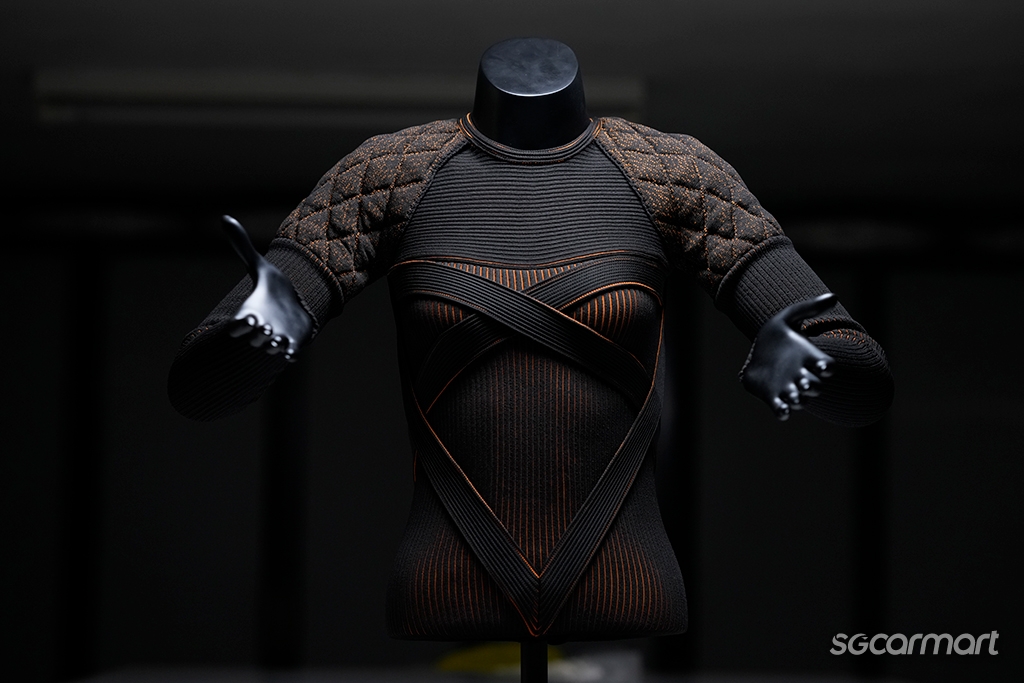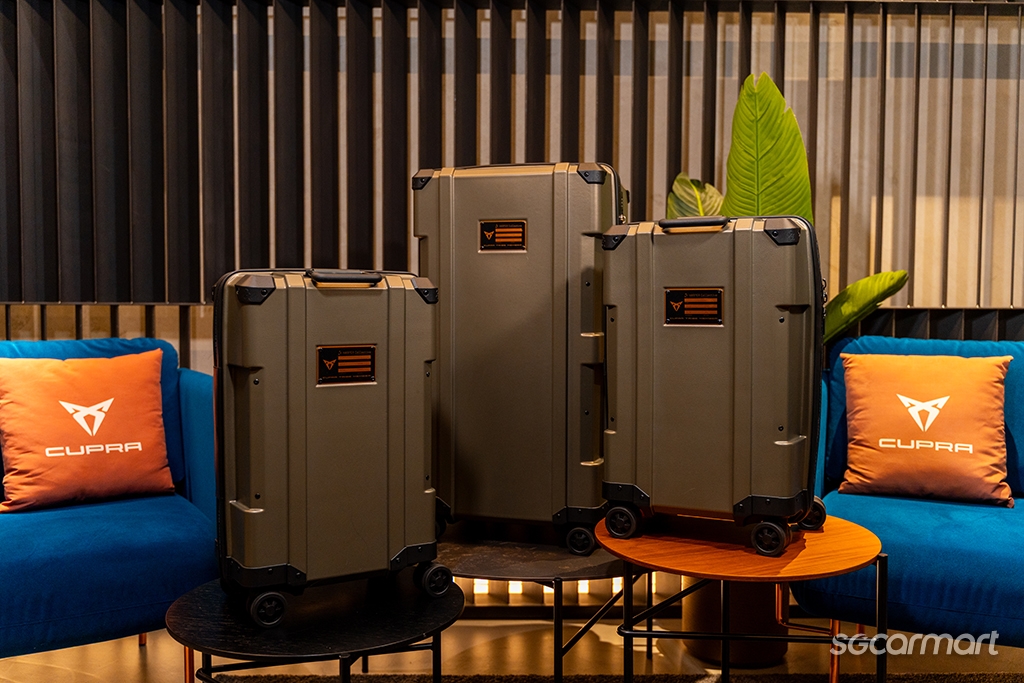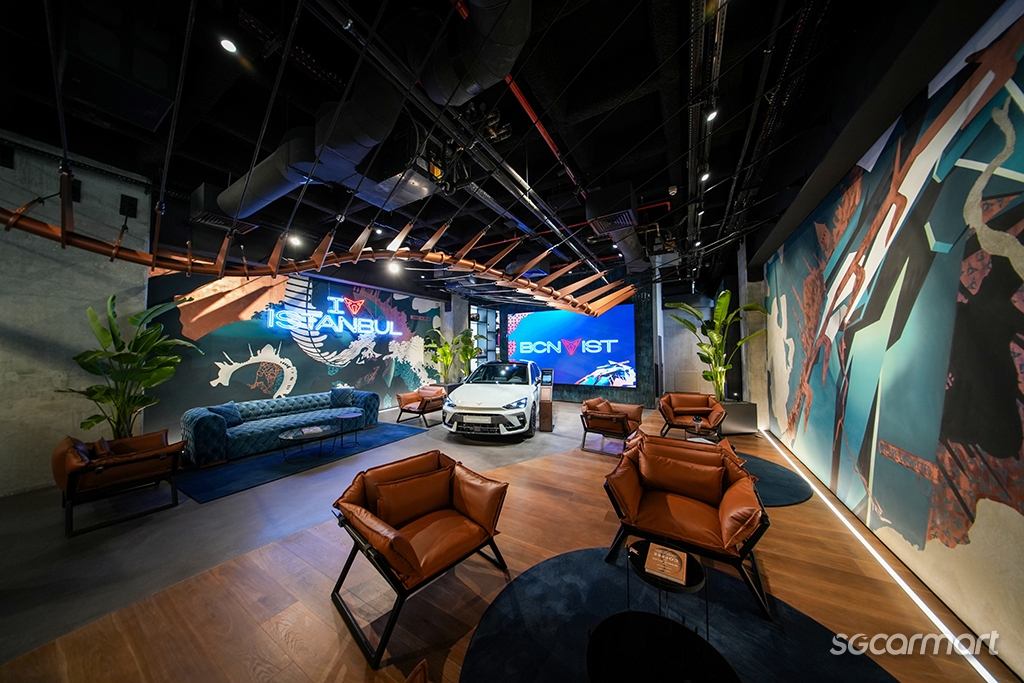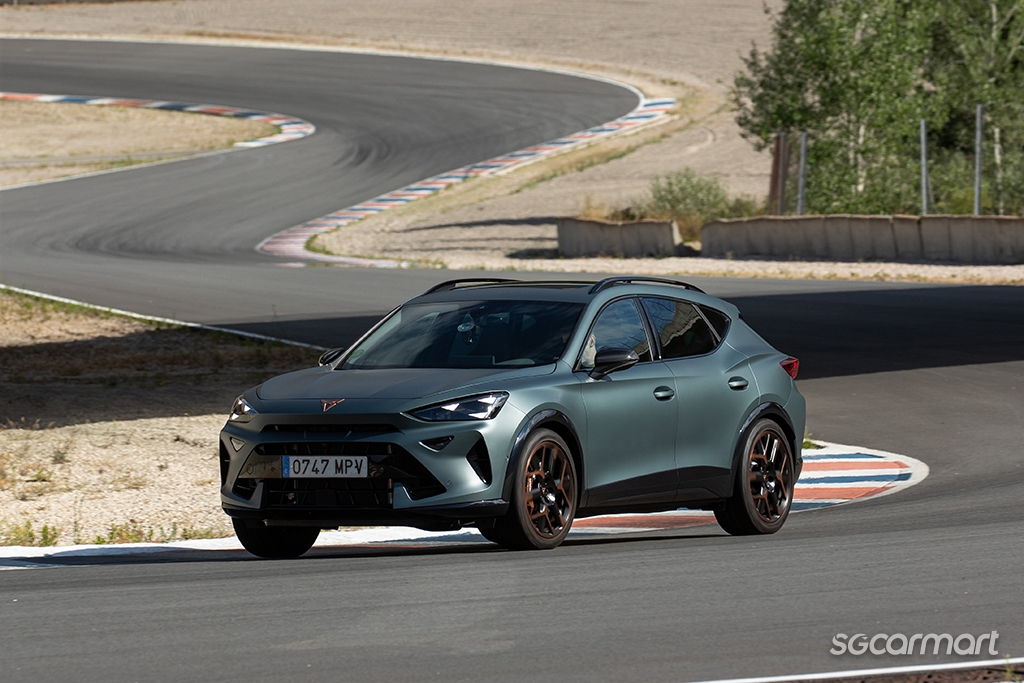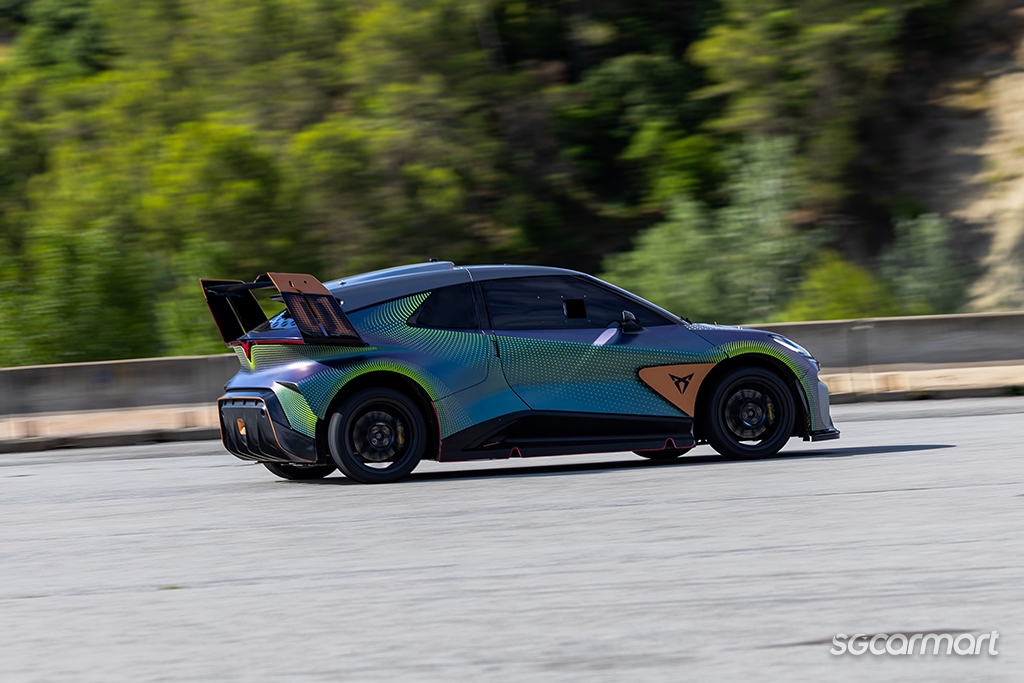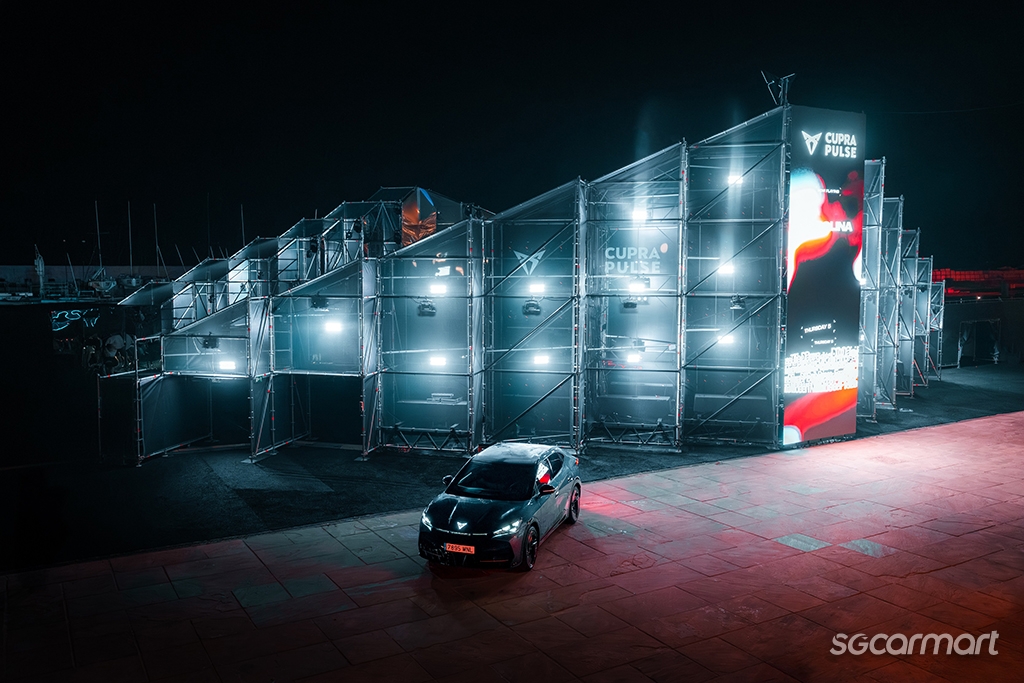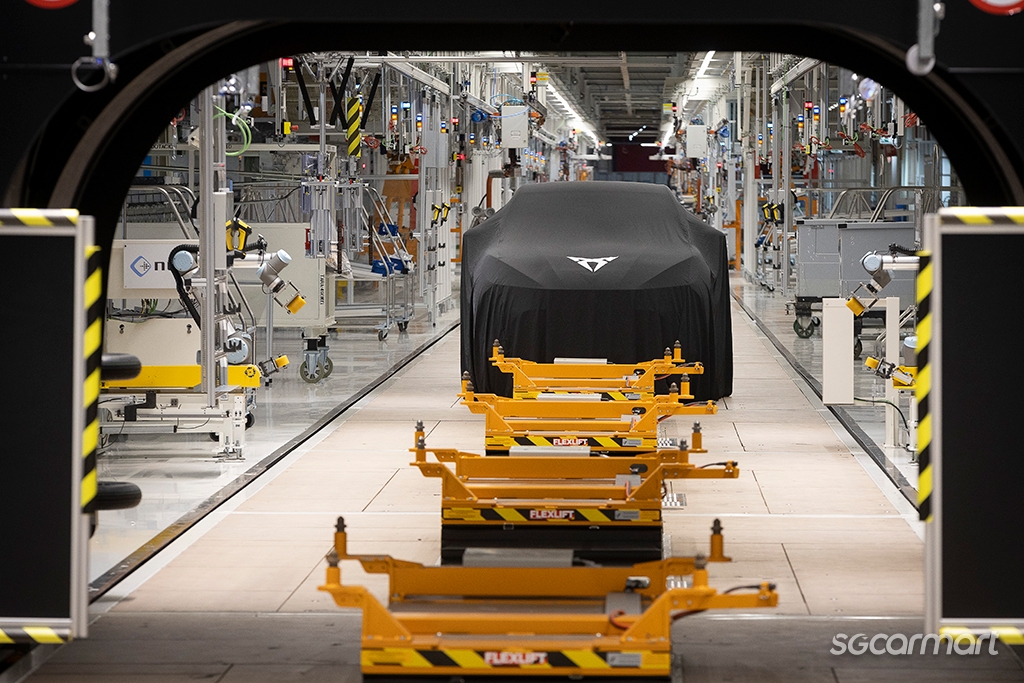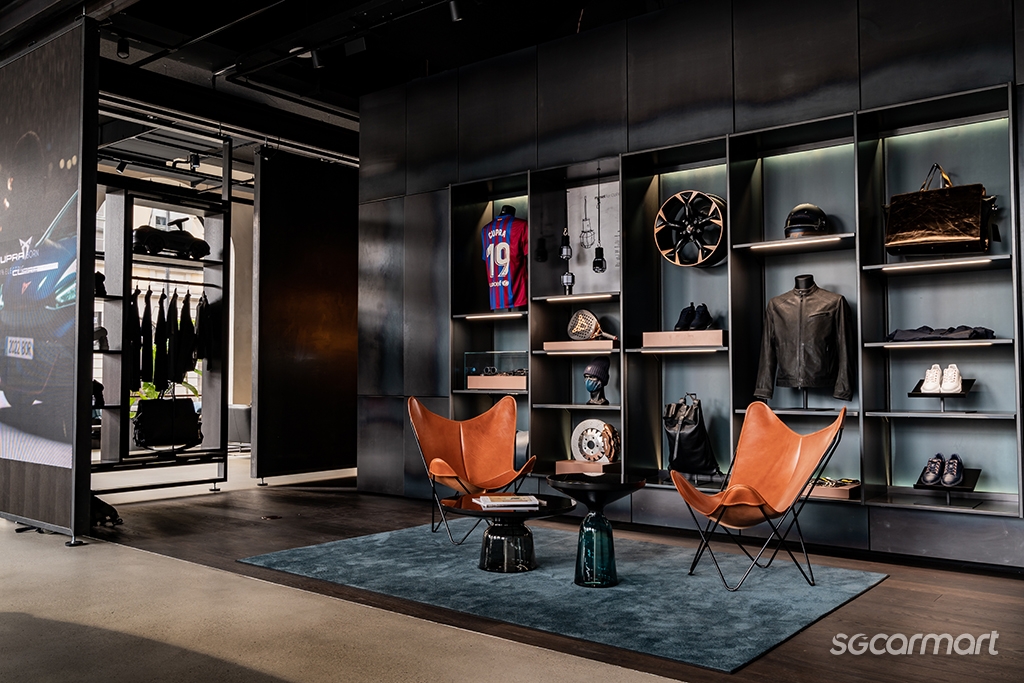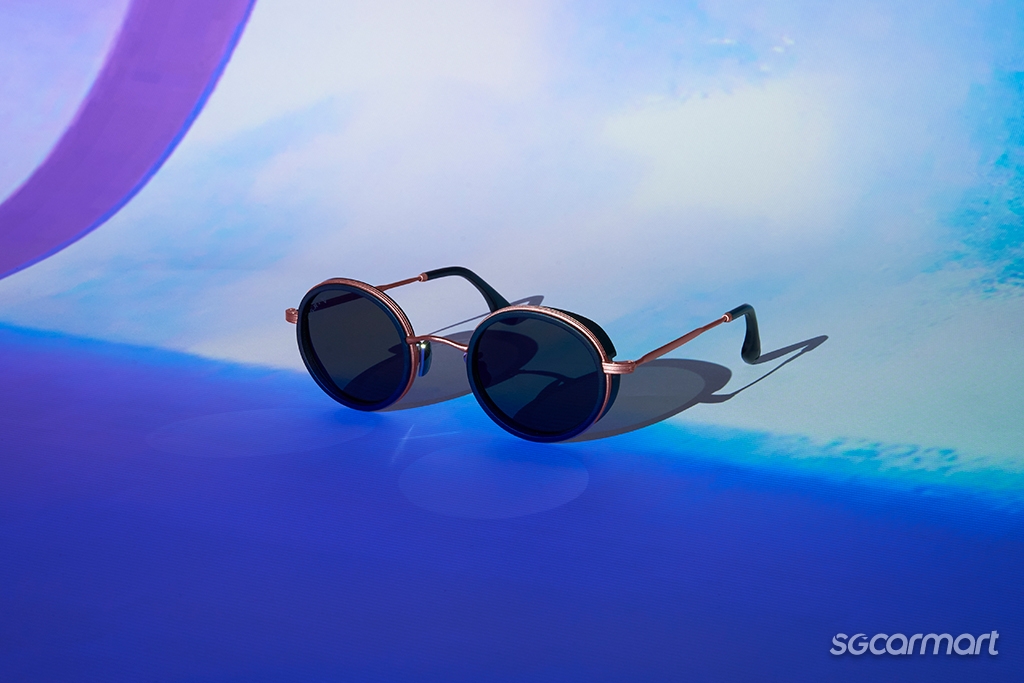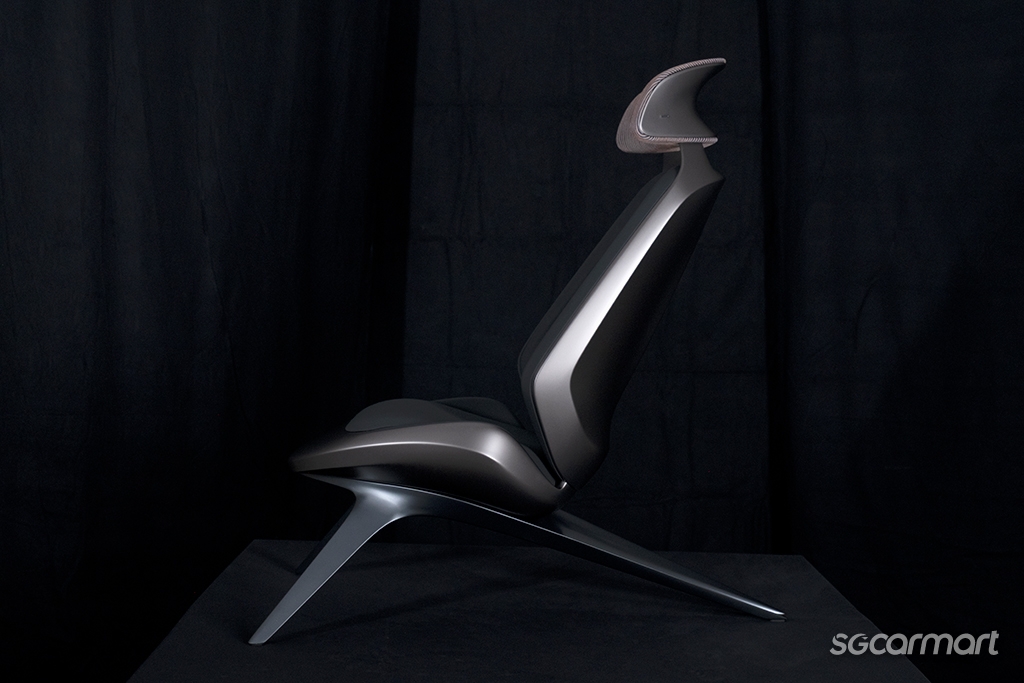Can design singularly propel a brand? Cupra is betting on it
17 Jul 2025|912 views
500,000.
It's rare to hear any brand specifically set a target of the maximum number of cars it wants to sell a year. Capitalism demands growth, and board rooms inevitably are always looking at P&L charts and growth forecasts.
And yet, that's what Cupra has said is the cap on the number of cars it wants to sell a year.
"A sweet spot between volume and premium", is how Cecilia Taieb, Global Head of Communications, frames it.
Intent
Headquartered in Martorell, Barcelona, just 30km out from the Barcelona city centre, the Cupra HQ is teeming with youthful vibrance. In fact, in the eight hours I spent there, I did not see a single person in a suit and dress shoes. Trendy polos and cool sneakers seem to be the dress code here.
That perhaps speaks to the heavy influence that the city of Barcelona has on the brand, but also the exact energy that the brand hopes to draw from its context.
Cupra is, all things considered, a young brand, having been officially spun off from Seat back in 2018.
Buzz words like 'rebel', 'rule-breaker’, 'provocative' and 'transgressive' are slung around candidly. And of course, it is marketing-speak. But it also captures the strategy behind the branding.
The Cupra brand was conceived to be something distinct and different from the VW Group's existing brand portfolio, and wears a hyper-specific design language
As Sven Schuwirth, Executive Vice-President Sales, Marketing & Aftersales tells us, the Cupra brand was purposefully designated to be something that the current VW Group portfolio is not, to "identify a spot in the market that none of our current [VW Group] brands is able to support or deliver on that [customer] demand".
Even from a brand communication and marketing perspective, "the focus is on brand desirability, not brand visibility," says Taieb.
There seems to be an obsession with individuality and 'smallness', and to develop a highly-specific brand personality.
A lot of that is built around a very particular and insistent emphasis on design, and a specific look-and-feel for the brand - built around desaturated colours, triangular motifs and a unifying design language. Terms like "passion" and "emotion" are naturally thrown around, but ultimately it's about creating a recognisable and instantly identifiable image - but also one that doesn't have to appeal to everyone.
The recently launched Cupra Design House division highlights the brand's design intent beyond cars - from experimental materials to product collaborations and beyond
Purpose
The result of that intent extends beyond just the cars. A newly set up division, Cupra Design House, yearns to make in-roads to the fashion industry and beyond (the division was officially introduced at Milan Design Week this year).
From 3D-printed shoes to a luggage collaboration with Jaden Smith, from sportswear to home furniture, Cupra has set no limit to where its design entrails will spread to. Padel racquets, bicycles, there's even a Cupra can drink. Cupra is clearly keeping its collaboration options very open.
And Taieb fully admits that the Cupra Design House is a brand-building tool to support the growth of the automotive business, rather than a standalone business case (even if it is presently profitable).
Design stands at the forefront of everything that Cupra is doing. Just look at its current lineup of cars. The Formentor is the brand's first standalone model, but it's the Born that has heralded in this distinctive new look. Desaturated exterior colours (the matte finishes are particularly eye-catching), bold exterior lines, textured surfaces in the cabin, these have now become archetypical of the way a Cupra looks.
From City Garages across the globe to even its own sparkling water, Cupra's design language seeks to be instantly recognisable and distinctive
Jorge Diez, Head of Design, highlights the distinctiveness that the Cupra design language has, and that it extends beyond just the cars. From the font and colours in the app UX, to the colour palette and materials used in the various Cupra City Garages peppered around the globe, Cupra products must share the same visual DNA, while at the same time each having some flavour of its own. He highlights how the Cupra City Garages, while certainly towing the line in terms of visual identity, each have their own flavour that stems from the city it resides in. There is no monolithic cut-and-paste corporate identity (CI).
Some may contend that this design-first approach might be a concession on the brand's inability to compete on the technology front (perhaps true not just of the brand specifically, but the VW Group as a whole). And inevitably, the challenge being presented by new Chinese players is impossible to overlook.
Cupra isn't ignorant of this, but instead seeks to carve out its own niche in the market. Technology is admittedly a "second priority" for the brand.
While acknowledging that burgeoning technology is certainly appealing, Cupra instead wants to focus on delivering products to customers that prioritise driving
What this also means is that Cupra does not want to be caught up in the technology arms race that feels like is dominating the automotive industry right now. Schuwirth has effectively ruled out a self-driving Cupra for the foreseeable future, because the brand wants to target buyers who profess driving desire. "I cannot imagine a Cupra car which arrives in front of your House fully autonomously. I think that it's certainly a red line for today. You never know what will happen in 20 years time, but for the next 5 to 10 years, no."
But cars are still fundamentally the brand's business. The Martorell factory is already in the midst of expanding to ramp up production of upcoming EV models (both Cupra's and VW's), in addition to already producing a range of cars for the VW Group.
And steady, incremental growth seems to be the name of the game. In the seven years that the Cupra brand has operated as a standalone outfit, it has seen sales improve year-on-year, and is Europe's fastest growing automotive brand. And 2025 looks set to trend accordingly - while no official numbers have been announced, Schuwirth tells us that order intake for 2025 so far has seen a two-third increase from the same period last year.
Outcomes
500,000. Cupra wants to limit volume so it does not become overly mainstream. As multiple people within the company echo, the brand has no ambitions about wanting to be generally popular. Rather, it's a brand "not for everybody to like, but for some people to love".
But the reality also is that Cupra cannot compete for mass acceptance. Big established players in the mass market segment easily outpace Cupra (Toyota sold 10.1m cars in 2024), and even within the group there are already multiple other brands positioned to compete in that segment - including Cupra's sister brand Seat.
“I want to somehow stand out from the masses, (to be) a bit more extreme. So whether you love it or you hate it, we go for ones that love it, and nothing in between. No compromises,” says Schuwirth.
That's a bold strategy with no guarantee of success. But success is never guaranteed. Conviction here is key.
While making and selling cars is still core to the brand's business, Cupra hopes to drive growth by building brand desirability
While there's understandably a numerical target in mind (3% market share in Europe by the end of the decade), Cupra's measure of success extends beyond car sales. The brand aims to be a top 100 value brand globally, and also to be the 'most trendy' brand among young customers.
Being part of the VW Group has its advantages - from product development to production, from technology sharing to economies of scale. Having the wide-spread support of the Group's existing network of retailers and dealers also affords readily available aftersales services to customers.
But that rebellious spirit persists. As Schuwirth highlights, being able to break free from the shackles of tradition, to not have to contend with the inescapable weight of corporate governance, allows Cupra to move boldly and swiftly, and to have the freedom to experiment, and to make choices that would perhaps otherwise be unavailable. "To challenge the status quo, and not be blocked by the legacy or the history of a brand that exists for a 100 years," he says.
Moving forward, Cupra is looking to expand into more global markets - though the brand is very clear about being selective in choosing markets appropriate for the brand image and target audience.
From fashion and lifestyle products to experimental materials and furniture, Cupra's unyielding dedication to a design-first approach underlines its rebellious approach to automotive marketing
Beyond just four wheels, Cupra wants to be seen in every other domain. Fashion and lifestyle, sports (the brand is FC Barcelona's Official Automotive and Mobility Partner), music (an ongoing partnership with the Primavera Sound Barcelona music festival), the culinary world and more.
Young and devoid of legacy, the Cupra brand can try, fail, and try again.
What does that look like 10 years from now? It's almost impossible to say. A rebellious upstart can only be young for so long. Every defiant youngest child inevitably will grow up.
But in the meantime, the mood around the brand here in Barcelona is one of excitement. Banking heavily on its design-forward, tradition-challenging ethos, the Cupra experiment has already begun.
500,000.
It's rare to hear any brand specifically set a target of the maximum number of cars it wants to sell a year. Capitalism demands growth, and board rooms inevitably are always looking at P&L charts and growth forecasts.
And yet, that's what Cupra has said is the cap on the number of cars it wants to sell a year.
"A sweet spot between volume and premium", is how Cecilia Taieb, Global Head of Communications, frames it.
Intent
Headquartered in Martorell, Barcelona, just 30km out from the Barcelona city centre, the Cupra HQ is teeming with youthful vibrance. In fact, in the eight hours I spent there, I did not see a single person in a suit and dress shoes. Trendy polos and cool sneakers seem to be the dress code here.
That perhaps speaks to the heavy influence that the city of Barcelona has on the brand, but also the exact energy that the brand hopes to draw from its context.
Cupra is, all things considered, a young brand, having been officially spun off from Seat back in 2018.
Buzz words like 'rebel', 'rule-breaker’, 'provocative' and 'transgressive' are slung around candidly. And of course, it is marketing-speak. But it also captures the strategy behind the branding.
The Cupra brand was conceived to be something distinct and different from the VW Group's existing brand portfolio, and wears a hyper-specific design language
As Sven Schuwirth, Executive Vice-President Sales, Marketing & Aftersales tells us, the Cupra brand was purposefully designated to be something that the current VW Group portfolio is not, to "identify a spot in the market that none of our current [VW Group] brands is able to support or deliver on that [customer] demand".
Even from a brand communication and marketing perspective, "the focus is on brand desirability, not brand visibility," says Taieb.
There seems to be an obsession with individuality and 'smallness', and to develop a highly-specific brand personality.
A lot of that is built around a very particular and insistent emphasis on design, and a specific look-and-feel for the brand - built around desaturated colours, triangular motifs and a unifying design language. Terms like "passion" and "emotion" are naturally thrown around, but ultimately it's about creating a recognisable and instantly identifiable image - but also one that doesn't have to appeal to everyone.
The recently launched Cupra Design House division highlights the brand's design intent beyond cars - from experimental materials to product collaborations and beyond
Purpose
The result of that intent extends beyond just the cars. A newly set up division, Cupra Design House, yearns to make in-roads to the fashion industry and beyond (the division was officially introduced at Milan Design Week this year).
From 3D-printed shoes to a luggage collaboration with Jaden Smith, from sportswear to home furniture, Cupra has set no limit to where its design entrails will spread to. Padel racquets, bicycles, there's even a Cupra can drink. Cupra is clearly keeping its collaboration options very open.
And Taieb fully admits that the Cupra Design House is a brand-building tool to support the growth of the automotive business, rather than a standalone business case (even if it is presently profitable).
Design stands at the forefront of everything that Cupra is doing. Just look at its current lineup of cars. The Formentor is the brand's first standalone model, but it's the Born that has heralded in this distinctive new look. Desaturated exterior colours (the matte finishes are particularly eye-catching), bold exterior lines, textured surfaces in the cabin, these have now become archetypical of the way a Cupra looks.
From City Garages across the globe to even its own sparkling water, Cupra's design language seeks to be instantly recognisable and distinctive
Jorge Diez, Head of Design, highlights the distinctiveness that the Cupra design language has, and that it extends beyond just the cars. From the font and colours in the app UX, to the colour palette and materials used in the various Cupra City Garages peppered around the globe, Cupra products must share the same visual DNA, while at the same time each having some flavour of its own. He highlights how the Cupra City Garages, while certainly towing the line in terms of visual identity, each have their own flavour that stems from the city it resides in. There is no monolithic cut-and-paste corporate identity (CI).
Some may contend that this design-first approach might be a concession on the brand's inability to compete on the technology front (perhaps true not just of the brand specifically, but the VW Group as a whole). And inevitably, the challenge being presented by new Chinese players is impossible to overlook.
Cupra isn't ignorant of this, but instead seeks to carve out its own niche in the market. Technology is admittedly a "second priority" for the brand.
While acknowledging that burgeoning technology is certainly appealing, Cupra instead wants to focus on delivering products to customers that prioritise driving
What this also means is that Cupra does not want to be caught up in the technology arms race that feels like is dominating the automotive industry right now. Schuwirth has effectively ruled out a self-driving Cupra for the foreseeable future, because the brand wants to target buyers who profess driving desire. "I cannot imagine a Cupra car which arrives in front of your House fully autonomously. I think that it's certainly a red line for today. You never know what will happen in 20 years time, but for the next 5 to 10 years, no."
But cars are still fundamentally the brand's business. The Martorell factory is already in the midst of expanding to ramp up production of upcoming EV models (both Cupra's and VW's), in addition to already producing a range of cars for the VW Group.
And steady, incremental growth seems to be the name of the game. In the seven years that the Cupra brand has operated as a standalone outfit, it has seen sales improve year-on-year, and is Europe's fastest growing automotive brand. And 2025 looks set to trend accordingly - while no official numbers have been announced, Schuwirth tells us that order intake for 2025 so far has seen a two-third increase from the same period last year.
Outcomes
500,000. Cupra wants to limit volume so it does not become overly mainstream. As multiple people within the company echo, the brand has no ambitions about wanting to be generally popular. Rather, it's a brand "not for everybody to like, but for some people to love".
But the reality also is that Cupra cannot compete for mass acceptance. Big established players in the mass market segment easily outpace Cupra (Toyota sold 10.1m cars in 2024), and even within the group there are already multiple other brands positioned to compete in that segment - including Cupra's sister brand Seat.
“I want to somehow stand out from the masses, (to be) a bit more extreme. So whether you love it or you hate it, we go for ones that love it, and nothing in between. No compromises,” says Schuwirth.
That's a bold strategy with no guarantee of success. But success is never guaranteed. Conviction here is key.
While making and selling cars is still core to the brand's business, Cupra hopes to drive growth by building brand desirability
While there's understandably a numerical target in mind (3% market share in Europe by the end of the decade), Cupra's measure of success extends beyond car sales. The brand aims to be a top 100 value brand globally, and also to be the 'most trendy' brand among young customers.
Being part of the VW Group has its advantages - from product development to production, from technology sharing to economies of scale. Having the wide-spread support of the Group's existing network of retailers and dealers also affords readily available aftersales services to customers.
But that rebellious spirit persists. As Schuwirth highlights, being able to break free from the shackles of tradition, to not have to contend with the inescapable weight of corporate governance, allows Cupra to move boldly and swiftly, and to have the freedom to experiment, and to make choices that would perhaps otherwise be unavailable. "To challenge the status quo, and not be blocked by the legacy or the history of a brand that exists for a 100 years," he says.
Moving forward, Cupra is looking to expand into more global markets - though the brand is very clear about being selective in choosing markets appropriate for the brand image and target audience.
From fashion and lifestyle products to experimental materials and furniture, Cupra's unyielding dedication to a design-first approach underlines its rebellious approach to automotive marketing
Beyond just four wheels, Cupra wants to be seen in every other domain. Fashion and lifestyle, sports (the brand is FC Barcelona's Official Automotive and Mobility Partner), music (an ongoing partnership with the Primavera Sound Barcelona music festival), the culinary world and more.
Young and devoid of legacy, the Cupra brand can try, fail, and try again.
What does that look like 10 years from now? It's almost impossible to say. A rebellious upstart can only be young for so long. Every defiant youngest child inevitably will grow up.
But in the meantime, the mood around the brand here in Barcelona is one of excitement. Banking heavily on its design-forward, tradition-challenging ethos, the Cupra experiment has already begun.
Thank You For Your Subscription.





















